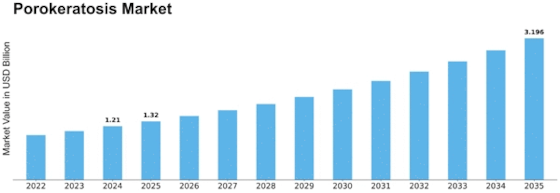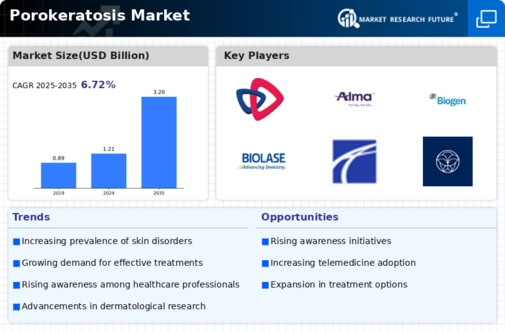Porokeratosis Size
Porokeratosis Market Growth Projections and Opportunities
The medical landscape known as the porokeratosis market has been drawing attention in recent years, which addresses a group of skin disorders characterized by abnormal skin growth. Porokeratosis includes different types, with the most common one being disseminated superficial actinic porokeratosis (DSAP). The market is focused on developing effective treatments for these diseases that are usually chronic and can impact a patient’s life quality significantly.
To this end researchers and pharmaceutical companies have engaged in understanding the causes of porokeratosis that led to development of targeted therapies. It was noted that these skin problems are inherited while advancement in genetic research led to better understanding of molecular mechanisms involved. That is why the Porokeratosis Market has seen the advent of new treatment approaches aimed at addressing their root causes.
Topical treatments play an important role in managing porokeratosis with different creams and ointments formulated to relieve symptoms and reduce visibility of skin lesions. Moreover, cryotherapy and laser therapy have been explored as non-invasive options for certain subtypes of porokeratosis. For that matter, traditional and innovative treatment modalities contribute towards market expansion providing patients choices based on severity and type of porokeratosis they have.
Geographically speaking, prevalence rates differ depending on various locations with some regions having higher incidences than others. Although historically more active in developed regions such as North America or Europe, there is a growing awareness as well as market expansion taking place here in emerging economies too. This is in part due to increased health care awareness, improved diagnostic capabilities and more focus placed on dermatological conditions by these areas.
Misdiagnosis among healthcare professionals and lack of public awareness are some challenges faced by Porokeratosis Market. Because it rarely occurs like other skin diseases whose symptoms resemble those associated with it; it is difficult diagnosing accurately. Medical education efforts alongside a sound information program have been directed towards improving early accurate diagnosis and thus enhancing patient outcomes.
Going forward, Porokeratosis Market is ripe for further research and development. Collaboration among academia, research institutions as well as pharmaceutical companies will spur innovation in treatment approaches. Moreover, patient-focused initiatives and support groups are playing a critical role in creating awareness and providing support to individuals affected by porokeratosis thereby creating a sense of belongingness and empathy.


















Leave a Comment